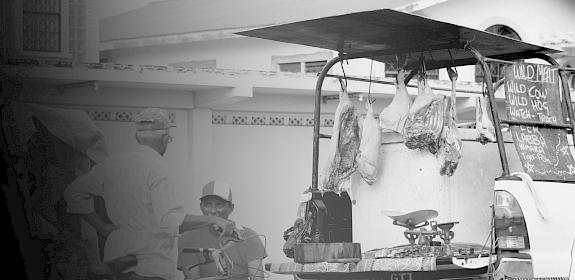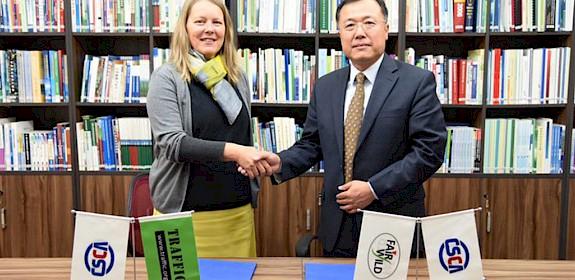
What’s Driving the Wildlife Trade?
Visitors inspect birds for sale - many wild-sourced - at Chatuchak market, Thailand © TRAFFIC
i
- »
- Publications »
- Reports »
- What’s Driving the Wildlife Trade?
Published 3 October 2008
New study on what’s driving the wildlife trade in south-east Asia
Cambridge, UK, 3rd October 2008—A report released today by the World Bank and TRAFFIC, the wildlife trade monitoring network, examines what factors influence wildlife trade in south-east Asia, and in particular trade that is illegal and unsustainable.
What’s Driving the Wildlife Trade?
Report author(s):
TRAFFIC
Publication date:
October 2008
key findings
Launching the report, What’s Driving the Wildlife Trade?, Tony Whitten, the World Bank’s Senior Biodiversity Specialist for the East Asia and Pacific Region, commented on the rationale in carrying out the study: “Understanding the factors that influence wildlife trade is absolutely fundamental if steps are to be taken to curb illegal trade or influence unsustainable trade so that it becomes sustainable.”
Most experts pointed to the rising affluence in consumer countries in Asia as a major driver of demand for wildlife products in the region, rather than to poverty within the countries considered.
“If you asked a range of people, some would regard enforcement as key, whilst others believe influencing what buyers want, and therefore influencing the demand for certain species, holds the key to addressing these issues. We wanted to canvass opinion, to see what experts working on all aspects of wildlife trade really thought, and ultimately where funds can best be targeted to have maximum impact.”
TRAFFIC, working in collaboration with other IUCN programmes, carried out the study on behalf of the World Bank by consulting more than 80 experts regarding the wildlife trade in four south-east Asian countries—Cambodia, Indonesia, Lao PDR, and Vietnam, to gather their insights. The experts included individuals working for conservation organizations, government staff, and independent researchers.
“A key issue emerging from the study is that while there was a clear agreement that many traded wildlife species have declined substantially as a result of over-exploitation, there is less consensus about the most effective ways to address these declines,” said Steven Broad, TRAFFIC’s Executive Director.
Experts believed that all of the approaches used, including regulating harvest and trade, increasing consumer awareness of the problems of illegal and unsustainable trade, and providing people depending on trade with alternative sources of income, were effective in some situations. However, there was no one single approach that emerged as being the most effective, with multiple approaches being applied in many instances.
Experts consulted during project workshops highlighted the importance of enforcing existing regulatory trade controls, which were found by the study to have increased in the region, and to use a variety of approaches simultaneously. The study also showed that experts believed that approaches such as support for local tenure arrangements, traditional practices and market-based approaches such as certification were often highly effective when applied, but have received less attention to date.
“Clearly the issue of what drives illegal and unsustainable wildlife trade is a complex one,” said Broad. “This study will greatly assist those involved in conservation efforts in south-east Asia to improve the targeting and design of efforts to reduce illegal and unsustainable wildlife trade.”
The findings of the report will be discussed during a workshop to be held at next week’s IUCN’s World Conservation Congress in Barcelona, Spain.
An Executive Summary of the report is also available.
Rising affluence
in consumer countries in Asia the major driver of demand for wildlife products in the region
>80 experts
interviewed regarding the wildlife trade in four south-east Asian countries—Cambodia, Indonesia, Lao PDR, and Vietnam
Alternative incomes,
raising consumer awareness about illegal and unsustainable trade, and regulating harvest and trade all key actions needed




